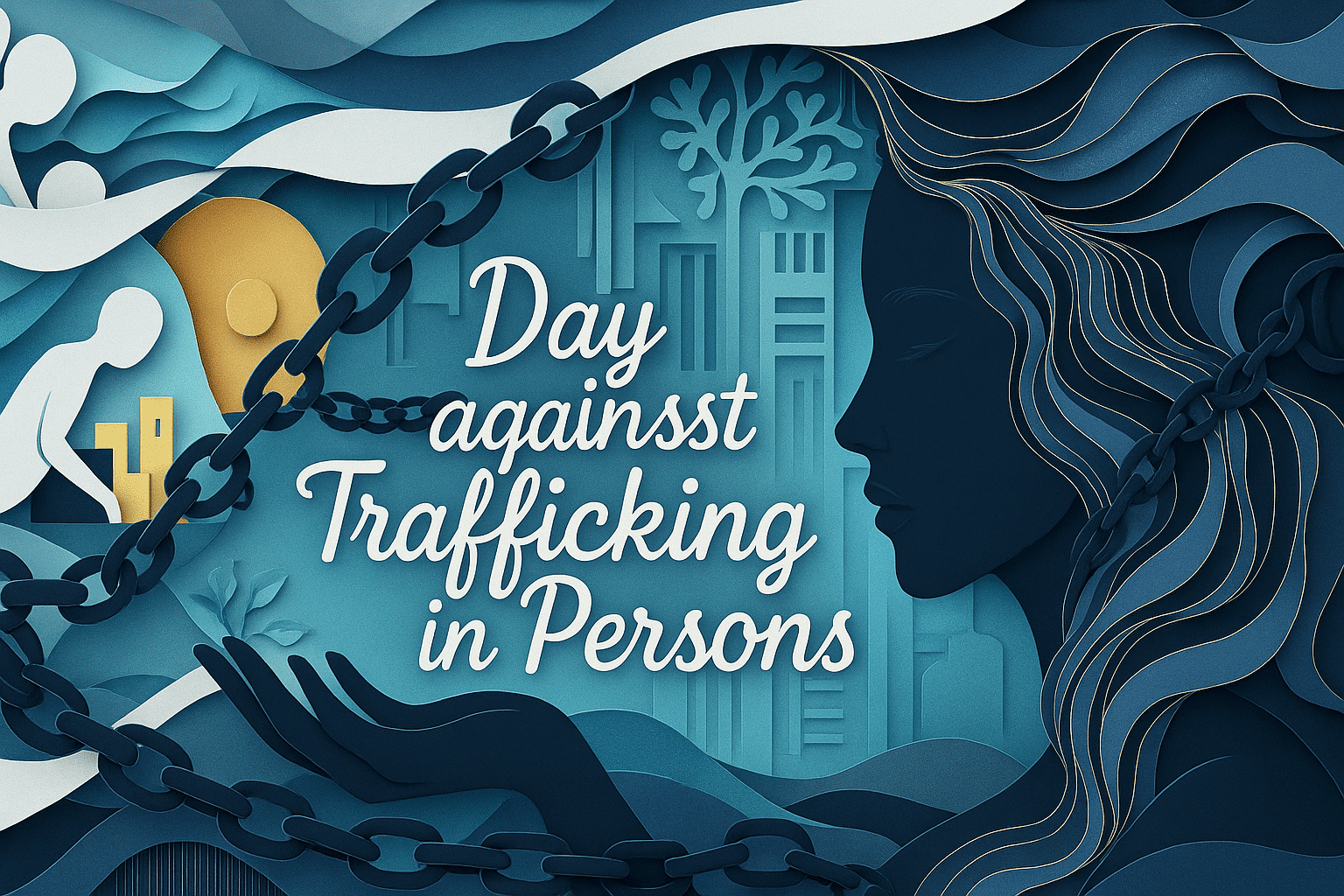What is World Day against Trafficking in Persons?
World Day against Trafficking in Persons is held every year on July 30 and is observed worldwide. It brings global attention to one of the most serious human rights issues: the exploitation and trade of people through force, fraud or coercion. This includes forced labor, sexual exploitation, child recruitment and organ trafficking. People of all ages and backgrounds can become victims, often through manipulation, threats or violence. Trafficking takes place in both legal and illegal economies, and often remains hidden.
This day supports efforts to protect victims, improve legal systems and strengthen international cooperation. It reminds the world that trafficking happens in every region, and that survivors need better access to support. Networks involved in trafficking are often well-organized and difficult to stop without joint action. On this day, organizations share knowledge, host events and demand better enforcement. World Day against Trafficking in Persons calls for global responsibility and practical solutions.
History and Origin
World Day against Trafficking in Persons was created by the United Nations in support of the Global Plan of Action to Combat Trafficking in Persons. This plan focuses on prevention, protection and prosecution. It also calls for better coordination between countries and improved resources for survivors. The day was established to keep the issue visible and encourage real political commitment.
Human trafficking is not a new crime, but it has evolved through modern systems and global markets. The increase in online platforms, conflict zones and migration routes has created more opportunities for traffickers. Children, migrants and people in poverty remain frequent targets. The day also draws attention to the misuse of power and trust in family, work or education settings. Trafficking often begins with a false promise, followed by control, debt and violence.
Since its first observance, the day has been used by many groups to push for stronger legal tools and better victim care. Campaigns aim to reduce stigma, raise awareness and improve training for those working in law enforcement, healthcare and education. Public pressure has helped bring trafficking into political agendas. But the scale of the problem requires long-term commitment. World Day against Trafficking in Persons is part of that continuing effort.
Who participates in World Day against Trafficking in Persons?
- Governments and agencies: They use the day to report on progress, update laws and promote new strategies.
- Human rights organizations: These groups raise awareness, support survivors and train professionals.
- Educators and schools: Lessons, talks and projects focus on prevention and early detection.
- Survivors and advocates: People with lived experience speak out and guide better practices.
- Media and journalists: Reports, documentaries and articles expose how trafficking works and who it affects.
Slogans and Themes
The themes of this day focus on justice, prevention and survivor support. Slogans often include phrases like “Victims’ voices lead the way” or “Reach every victim, leave no one behind.” Each year highlights a different angle, such as technology, law enforcement or survivor rights. The goal is always the same: more action, stronger protection and shared global responsibility. These themes are used in campaigns, posters and public speeches around the world.
Colors, Symbols and Patterns
Colors:
- Blue: Used by many anti-trafficking campaigns to symbolize freedom and protection.
- Black: Represents the hidden nature of trafficking and the reality of exploitation.
- White: Stands for transparency, dignity and safety.
Symbols:
- Broken chain: Represents the end of forced control and the goal of freedom.
- Handprint: A visual signal of resistance and awareness.
- Open eye: Stands for vigilance and the need to recognize warning signs.
Patterns:
- Barcodes: Often used to reflect the way trafficked people are treated as commodities.
- Shadow figures: Symbolize the invisibility and isolation faced by victims.
- Net or web imagery: Refers to the complex networks involved in trafficking operations.
Most Used Hashtags
- #EndHumanTrafficking
- #WorldDayAgainstTrafficking
- #HumanTraffickingAwareness
- #SupportSurvivors
- #StopExploitation
How do you celebrate World Day against Trafficking in Persons?
- Attend an event or panel: Many groups host talks, workshops or public discussions.
- Share survivor stories: Help spread real voices and lived experiences with care and respect.
- Wear blue or display symbols: Join visible support actions organized around the world.
- Educate yourself and others: Learn how trafficking works and how to report concerns.
- Support anti-trafficking organizations: Donate, volunteer or share their campaigns.
Why is World Day against Trafficking in Persons important?
World Day against Trafficking in Persons is important because it keeps a hidden crime in the spotlight. Trafficking does not only happen in distant places, it affects every region, often close to home. This day creates room for education, political focus and survivor support. It brings attention to the systems that allow exploitation to continue, from weak law enforcement to lack of safe migration. Real change begins when people understand how trafficking operates.
This day also strengthens the global response to a shared problem. It helps victims receive justice, and makes it harder for traffickers to act without consequences. The day gives visibility to those working behind the scenes, such as outreach workers, shelter staff and lawyers. It also provides an annual moment to review progress and set new goals. By marking this day, people worldwide push forward the fight against human trafficking.
Features
Contact Info
July 30: Day against Trafficking in Persons
Why do you keep falling for the same type?
Read the article Lovemaps: the hidden blueprint of our love.

